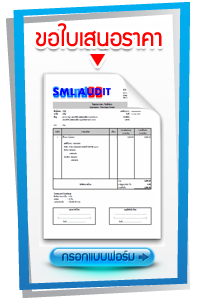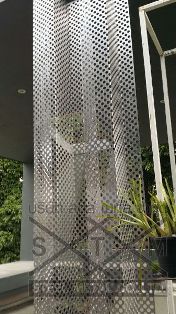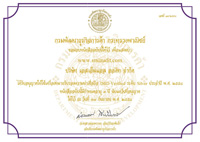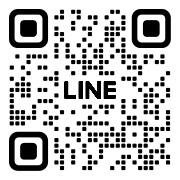บริษัท เอสเอ็มแอล ออดิท จำกัด เลขทะเบียนนิติบุคคล 0115555017811 -สาขาบางนา,สมุทรปราการ
ที่อยู่ : เลขที่ 59/294 ซ.อ๊อกฟอร์ด 2 ถนนศรีนครินทร์ บ้านกลางเมือง British town หมู่ 16 ตำบล : บางแก้ว
อำเภอ : บางพลี จังหวัด :สมุทรปราการ รหัสไปรษณีย์ : 10540
มือถือ : 080-553-7088 /080-5537077 โทร :023494340 /02-758-8994 แฟกซ์ : 021020819
อีเมล :sale@smlaudit.com, smlaudit@hotmail.com
เว็บไซต์ : www.smlaudit.com
| Import Export License A natural person is required as well to submit any of the following valid ID cards to the Customs during the clearance procedures: Thai ID for Thais and passport for non-Thai residents. Sunbelt Asia has worked with a number of freight forwarders as well and would be happy to refer one to you. If you on the other hand like a challenge as Thai customs have often been called a “Kingdom within a kingdom” here is the procedure:
1 File an Import Declaration: The first stage of import clearance procedure is to submit an import Declaration (Customs Form 99 or 99/1) manually or through the EDI system.
2 Prepare Supporting Documents: The second stage is to prepare the following supporting documents(as prescribed in the Customs Notification No. 38/2543 ) :
2.3 Check the Declaration and Supporting Documents: The third stage is to submit the Import Declaration and all supporting documents for examination by Customs at the port of entry (in case of EDI Red Line or manual system). The Customs officials will check whether the Declaration is properly made out, and the supporting documents required are attached. In addition, Customs tariff, tax and duty calculation, valuation of goods are also examined at this stage.
2.4 Collect Import Duties and Taxes: The fourth stage is payment of applicable taxes and/or depositing guarantee. There are currently four means for payment of import duties and taxes:
(1) Payment at the Customs Department: Importers make payment at the Cashier Division at the port of entry. The Customs then issue them a payment receipt to be used for cargo inspection and release at relevant warehouses. Payment could be made either in cash or cheque. In case of cheque payment, it must be:
(2) Electronic Fund Transfer via the BOT's BAHTNET: Importers have been allowed to instruct their commercial banks to transfer payment, through the BAHTNET system, to the Customs Department since January 1, 1998.
(3) Electronic Payment at Krung Thai Bank (Teller Payment System): The Customs Department and Krung Thai Bank have been interfaced since September 1, 2000. The importers who want to use this service are required to:
(4) Electronic Fund Transfer (EFT) via EDI: Under this automated system, the electronic payment is made among tax/duty payers (importers/exporters), broker banks (the banks where importers/exporters have accounts), Customs Banks, and the Customs Department. The EFT process via EDI is as follows:
2.5 Inspect and Release Cargo: The last stage is to inspect and finally release cargo from Customs custody. Importers submit the verified Declaration together with the payment receipt at appropriate warehouses. Customs inspectors then inspect the imported cargo against the Declaration made. If the cargo inspected corresponds to the Declaration made, the Customs inspectors will record the inspection result to the computer system and release cargo to importers.
Nevertheless, the process of cargo inspection under manual system is different from that under EDI system. As regard to manual cargo clearance, shipments are inspected on a random basis as specified by the Customs Department. EDI system, however, requires that the cargo under profile be examined as deemed appropriate regardless of the random rate specified by the Customs Department for manual system (Customs Notification No. 47/2543).
3. Export Clearance Procedures
3.1 File an Export Declaration: The first stage of export clearance procedures is to file an Export Declaration (Customs Form No. 101 or No. 101/1) as prescribed by the Customs manually or through the EDI system.
3.2 Prepare Supporting Documents; The second stage is to prepare the following supporting documents:
1. Invoice;
2. Packing List;
3. Foreign Transaction Form if the FOB value exceeds Baht 500,000;
4. Export License (if applicable); and
5. Other relevant documents (if applicable).
3.3 Check the Declaration and Supporting Documents: The third stage is to submit the Declaration and all supporting documents for examination by Customs at the point of export (in case of EDI Red Line or manual system). The Customs officials will check whether the Declaration is properly made out, and the supporting documents required are attached.
3.4 Collect Export Duties and Taxes (if any): The fourth stage is to pay applicable taxes and duties.
3.5 Inspect and Release Cargo: The last stage is to inspect and finally release cargo from Customs custody. The exporters submit the verified Declaration together with the payment receipt (if any) at appropriate warehouses. Customs inspectors then inspect the exported cargo against the Declaration made. If the goods inspected corresponds to the Declaration made, the Customs inspectors will record the inspection result to the computer and release the cargo.
In case the exporters utilize the EDI green line process, they will electronically submit the Declaration as mentioned in 3.1 to the Customs Department. The Customs Department then reviews the electronic Declaration through its EDI system. If the Declaration is properly made out and classified as Green Line, the Customs Department will assign Declaration Number to the exporters who will directly proceed to warehouses for cargo inspection and release. If you are importing or exporting, it is required to apply for an Import Export License (also called Customs Card) which is valid for three years. The Gold smart card is for importers and exporters; the Licensed Custom Brokers get the silver; the yellow smart card is for the owner or manager; the attorney-in-fact gets a green card and the customs clearance card is pink |



 บุคคลทั่วไป 2 คน
บุคคลทั่วไป 2 คน

